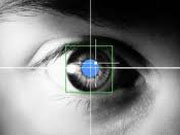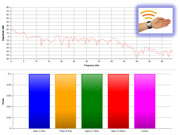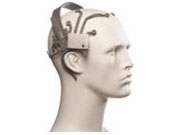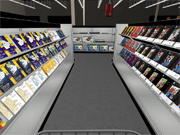
Apr
When the Eye Wanders, We Can Tell You Why: Our Guide to Eye Tracking
jerry9789 0 comments Burning Questions
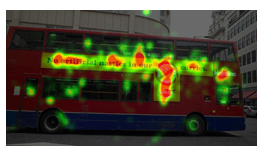 When the eye wanders, a skilled eye tracking technician can tell you why. Eye tracking is the technique of following a subject’s visual gaze, and discovering what attracts the eye in certain directions. Eye tracking provides helpful clues to the optimum design of everything from a simple printed page to a vast department store layout; it can also give product designers good information about the attractions of certain colors, shapes and features. Technical advances over the past 10 years have allowed the science of eye-tracking to move out of the scientific laboratory and into the toolkits of marketing professionals.
When the eye wanders, a skilled eye tracking technician can tell you why. Eye tracking is the technique of following a subject’s visual gaze, and discovering what attracts the eye in certain directions. Eye tracking provides helpful clues to the optimum design of everything from a simple printed page to a vast department store layout; it can also give product designers good information about the attractions of certain colors, shapes and features. Technical advances over the past 10 years have allowed the science of eye-tracking to move out of the scientific laboratory and into the toolkits of marketing professionals.
There are a variety of tools available; one of the most common, field-of-vision glasses, have a tiny camera mounted on their frame. The video images recorded by the camera follow precisely the movement of the eyes as they examine a room, an object or another individual. A set of crosshairs superimposed on the image gives the researcher more precise lock on the subject’s field of attention.
Screen-based systems record eye movements of an individual watching an image, such as a webpage, a television commercial, or a print advertisement transmitted to a video screen. This technology is less expensive than field-of-vision glasses and relatively easy to use, allowing more flexibility in the location of the study.
Several data-focusing techniques allow researchers to refine their results. Using samples of a print ad, for example, “gaze plots” follow the sequence of individual glances from one part of the display to the next; “heatmaps” pinpoint the locations most visited or concentrated upon by the subjects; and area of interest measure how much time the subject spent on each section of the ad, from main body copy to images to headlines to logos. Eye-tracking can be combined with other forms of feedback from the respondent, such as biofeedback, to not only understand WHERE the respondent is looking, but also to shed some light on WHY. By combining both eye-tracking gaze plots and heat maps results with the results obtained from biofeedback, such as heart rate, pupil dilation, facial tics and perspiration, the researcher is able to obtain and analyze feedback on a completely new level.
Because eye-tracking systems are expensive, many companies have turned to professional researchers to conduct the studies and interpret the results. From end to end, the studies can take anywhere from several days to six weeks. The results can be tailored to budgets and time; even small improvements to an important campaign can bring impressive bottom-line results. Eye-tracking studies can be especially effective when comparing competing products, and helping manufacturers and retailers in their never-ending search for the small edge that translates into bigger market share and a healthier bottom line.
Tags: consumer research news, eye tracking, eye tracking and market research, gaze trails, heat maps, market research, market research news, why the eye wanders
